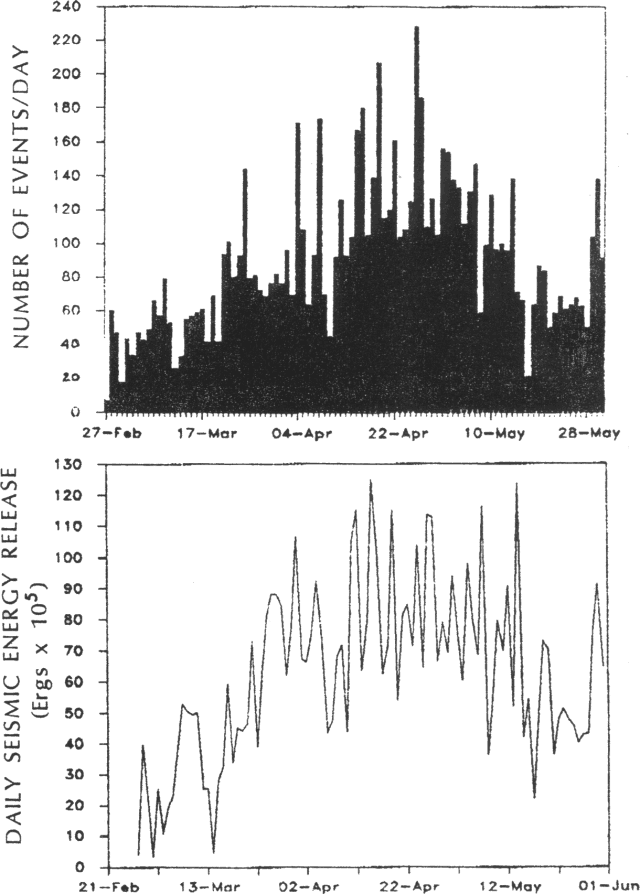Report on Galeras (Colombia) — May 1989
Scientific Event Alert Network Bulletin, vol. 14, no. 5 (May 1989)
Managing Editor: Lindsay McClelland.
Galeras (Colombia) Ash emission ends; seismicity declines briefly
Please cite this report as:
Global Volcanism Program, 1989. Report on Galeras (Colombia) (McClelland, L., ed.). Scientific Event Alert Network Bulletin, 14:5. Smithsonian Institution. https://doi.org/10.5479/si.GVP.SEAN198905-351080
Galeras
Colombia
1.22°N, 77.37°W; summit elev. 4276 m
All times are local (unless otherwise noted)
Activity declined after the moderate ash emissions of early May. Little if any plume was visible in most weather conditions, although acid rain continued to irritate eyes and damage vegetation on the N flank. Seismicity gradually declined until late May, when it began to increase again, reaching the same level as at the end of April (figure 2). Most of the seismicity was of low frequency; few high-frequency events were detected. Pulses of tremor that lasted about 5 minutes and had dominant frequencies of 4-5 Hz were often recorded. Attenuation was high at distant stations, indicating a shallow source. Rates of SO2 emission declined to a few hundred tons/day (see figure 12). No significant cumulative changes in deformation have been measured.
 |
Figure 2. Number of seismic events/day (top) and daily seismic energy release (bottom) at Galeras, late February-May 1989. Courtesy of INGEOMINAS. |
Geological Summary. Galeras, a stratovolcano with a large breached caldera located immediately west of the city of Pasto, is one of Colombia's most frequently active volcanoes. The dominantly andesitic complex has been active for more than 1 million years, and two major caldera collapse eruptions took place during the late Pleistocene. Long-term extensive hydrothermal alteration has contributed to large-scale edifice collapse on at least three occasions, producing debris avalanches that swept to the west and left a large open caldera inside which the modern cone has been constructed. Major explosive eruptions since the mid-Holocene have produced widespread tephra deposits and pyroclastic flows that swept all but the southern flanks. A central cone slightly lower than the caldera rim has been the site of numerous small-to-moderate eruptions since the time of the Spanish conquistadors.
Information Contacts: INGEOMINAS, Pasto.

